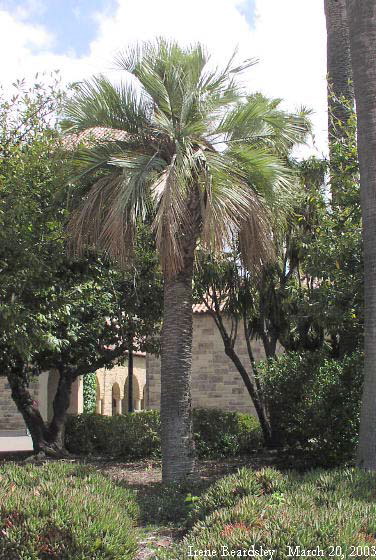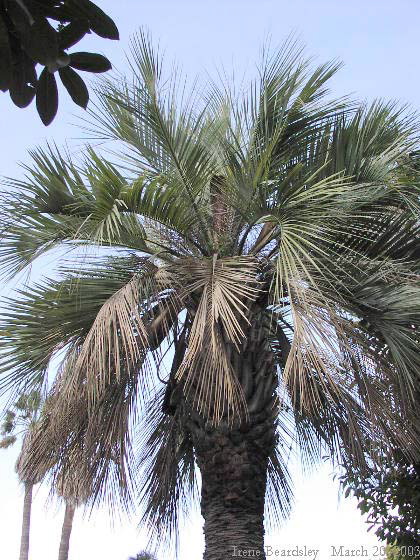Butia odorata (Butia capitata, misapplied)
 pindo palm
pindo palm
A glance tells you this palm is different. Its frosted blue-gray color is unlike that of the California fan palms and gives the trees a distinguished hoary appearance. The pinnate leaf segments have a tendency to cluster in pairs. The leaf is not toothed, but the lowest leaf segments may resemble spikes. If you can find the dates, they are said to be edible. There is a specimen in the outer southeast circle in the Inner Quad.
In about 2011 it came to light that the plant in the nursery trade under the name Butia capitata, presumably including our specimen, is actually Butia odorata (“Validation of the Name Butia odorata,” Palms Vol. 55(1) 2011).
Name derivation: Butia – native name; capitata – in a dense head.
About this Entry: The main text of this entry is from the book Trees of Stanford and Environs, by Ronald Bracewell, published 2005. Note on misapplied name added Sep 2017, entry name updated Apr 2018 (SP).





